Lukovac island reveals secrets
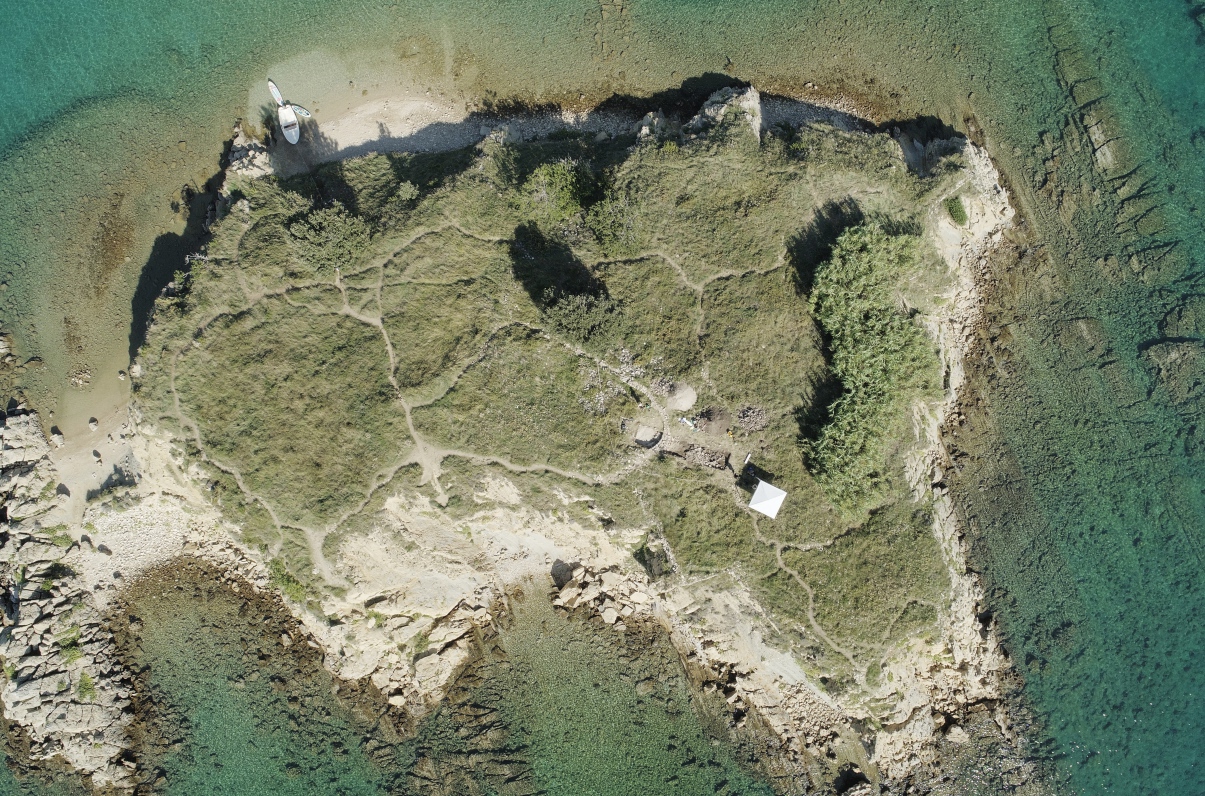
22 10 2024
Category: Adriatic, Croatia, Rab, Research results
During the recent excavation season on the Croatian islet of Lukovac, Polish and Croatian researchers uncovered unique traces of daily life from the late antique and early Middle Ages.
Located in the shallow bay of Crnika in the northern part of the island of Rab, off the shore of the Lopar peninsula, the tiny and rocky island of Lukovac, as a result of interdisciplinary research, is becoming a key point for understanding post-antique settlement changes in the north-eastern Adriatic. Although the islet covers an area of only 5000 sq. m., archaeological research conducted on it in recent years has yielded extremely important discoveries, shedding entirely new light on the daily life of the post-Roman community in the as-yet little-understood process of settlement transformation of the north-eastern Adriatic area between late antiquity and the early Middle Ages.
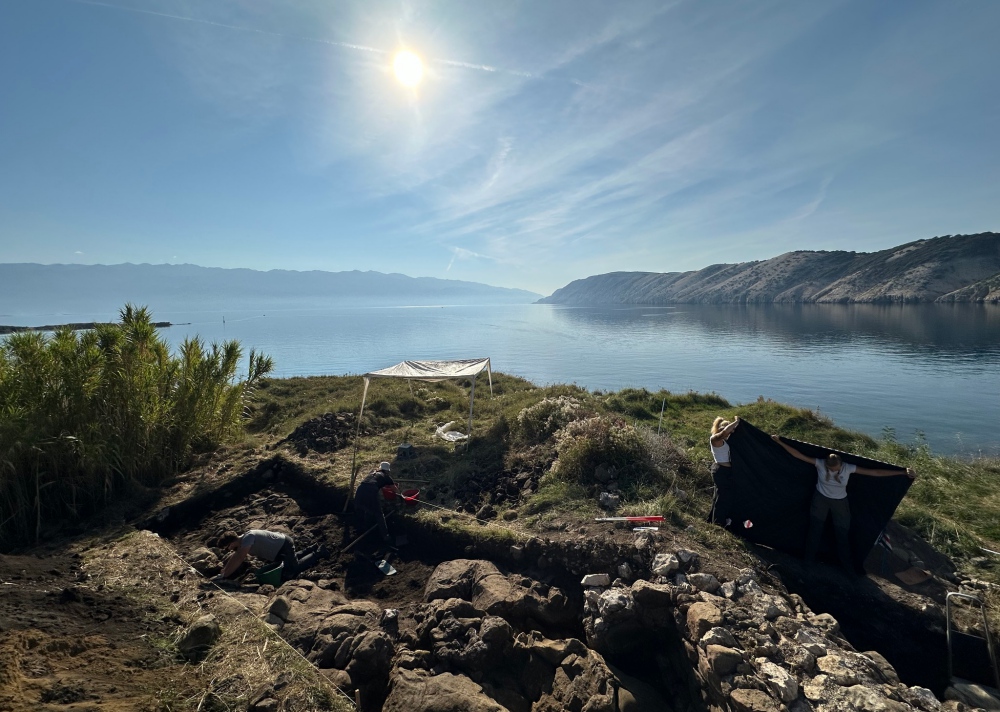
Since 2022, as part of the ‘Archaeological Topography of the Rab Island’ project, work has been carried out on Lukovac islet by a Polish-Croatian team of researchers led by Prof Fabian Welc from the Institute of Archaeology UKSW and the Centre for Systemic Risk Analysis UW and Dr Ana Konestra from the Institute of Archaeology in Zagreb. Their main objective was to carry out a comprehensive geoarchaeological reconnaissance of the island to understand the extent and nature of the surviving architectural structures. This research included drone documentation and GPR and geomagnetic profiling, which enabled the creation of a high-resolution digital model of the island (DEM).
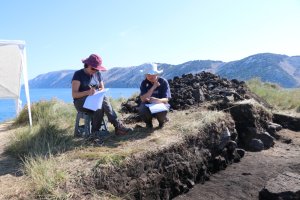 The results of excavations carried out in 2023 and 2024 indicate that almost the entire accessible area of the island was built up in antiquity. The centrepiece of this complex was a late antique church, the remains of which are still preserved today. Based on the finds and analogies, the researchers conclude that the temple was built in the 6th century AD. It was a relatively large building for its time (13 x 6.50 m) with rich furnishings, as evidenced by this year’s finds, including decorative remains in the form of fragments of Egyptian porphyry tiles, glass fragments from lamps, lead frames used to fix glass in windows, and a unique stone reliquary. Furthermore, fragments of a defensive wall were discovered along the outer edge of the island’s plateau, indicating that the settlement was fortified. The data acquired reveals an extremely complex picture of settlement on the island. Discovered through geophysical and archaeological surveys, the buildings, which are of considerable size, had storage, economic, and probably residential functions. According to Dr. Ana Konestra, the island of Lukovac served as a religious centre and refugium for the surrounding population.
The results of excavations carried out in 2023 and 2024 indicate that almost the entire accessible area of the island was built up in antiquity. The centrepiece of this complex was a late antique church, the remains of which are still preserved today. Based on the finds and analogies, the researchers conclude that the temple was built in the 6th century AD. It was a relatively large building for its time (13 x 6.50 m) with rich furnishings, as evidenced by this year’s finds, including decorative remains in the form of fragments of Egyptian porphyry tiles, glass fragments from lamps, lead frames used to fix glass in windows, and a unique stone reliquary. Furthermore, fragments of a defensive wall were discovered along the outer edge of the island’s plateau, indicating that the settlement was fortified. The data acquired reveals an extremely complex picture of settlement on the island. Discovered through geophysical and archaeological surveys, the buildings, which are of considerable size, had storage, economic, and probably residential functions. According to Dr. Ana Konestra, the island of Lukovac served as a religious centre and refugium for the surrounding population.
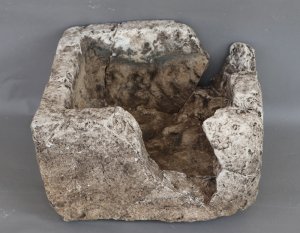
A stone reliquary found near a church on the islet of Lukovac.
Analysis of the pottery found on the island indicates links with centres of ceramic production in northern Italy. The discovered fragments of coarse ware vessels date from the 6th to 8th century AD and bear a strong resemblance to pottery found in northern and eastern Italy. So far, it has not yet been established exactly where the northern Italian pottery workshops were located, but researchers agree that they must have been concentrated in the Po Valley and in the region of Ravenna, which was during this period the capital of the Byzantine Exarchate of Ravenna and a major trade centre. These connections suggest that the fortified settlement on the islet of Lukovac was part of a wider trade and settlement-military network, probably under Byzantine control (the Ravenna Exarchate), covering the northern Adriatic region and that its inhabitants also participated in the exchange of goods with other regions of the Mediterranean (this is also demonstrated by the discovery of 7th century amphorae fragments produced in Byzantine Egypt).
A cistern full of treasures
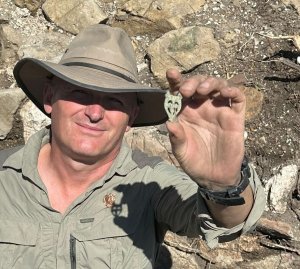
Byzantine belt buckle from the 7th century AD.
In 2024, researchers explored, among other things, the remains of a cistern measuring 11.5 x 5.2 metres and more than 2 metres deep. It is largely filled with late antique rubbish, in the context of which a magnificently decorated bronze belt buckle from the 7th century (the second of its kind found in Croatia) was found. It also turned out that the filling of the cistern is an absolutely unique source of information about the daily diet of the island’s inhabitants. During the excavation work, soil samples were taken, the archaeobotanical analysis of which was handled by Professor Renata Stachowicz – Rybka from the Institute of Botany of the Polish Academy of Sciences. Archaeobotanical studies make it possible to discover the changing role of plants in human life depending on the time, place, and nature of the site under analysis. They also provide valuable information on the diet of people, livestock, and the way the land was cultivated, and make it possible to reconstruct the directions of movement and evolution of cultivated species.
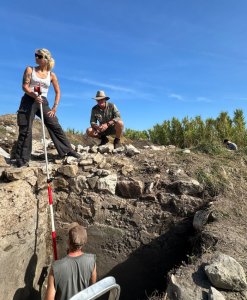
Cistern research on Lucovac islet.
In the sediments filling the cistern on Lukovac islet, in addition to numerous charcoals in several layers, numerous taxa of cultivated plants were discovered in the form of charred cereal grains, such as common wheat and spelt (Triticum aestivum, and T. aestivum ssp. spelta), as well as those belonging to rye (Secale cereale), which in preliminary observations appear to be the most numerous. Dozens of legume seeds were also found, the most common being broad beans (Vicia faba var. minor), also peas (Pisum sp.) and lentils (Lens sp.). Grape seeds (Vitis vinifera), which were probably also grown in the region at the time, were also identified.
The samples were dominated by seeds and fruits of crops, but it is very interesting to note that weed residues or other common contaminants such as ear residues or chaff were almost never encountered during the analysis. The grain was probably threshed and cleaned elsewhere, outside the Lukovac islet, and imported ready for cooking.
So far, research into the early medieval settlements of present-day Croatia has focused on the region at the forks of the Sava and Drava rivers. There are only eight sites that provide archaeobotanical data on the development of agriculture at this time. The islet of Lukovac, due to its location and its defensive function, has a completely different character to the mainland settlements, so detailed research will bring important new insights into the eating habits of early medieval island populations.
Aerial field surveys
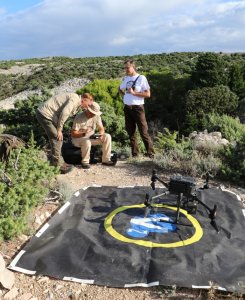
Non-invasive research conducted at the Late Antique fortress of Sts. Cosmas and Damian using drones by Prof. Robert Glębocki and Pawel Waligóra.
Also taking part in the research on the Lukovac islet were employees of the Faculty of Power and Aeronautical Engineering from the Aviation Research Centre (OBLot) of the Warsaw University of Technology – Prof Robert Głębocki and Paweł Waligóra. OBLot was responsible for tasks related to aerial archaeology, carrying out non-invasive research using unmanned aerial systems (drones) equipped with modern LIDAR sensors. This technology allows extremely precise scanning of the site, revealing structures hidden under dense vegetation and invisible to traditional survey methods.
The expedition scanned, among other things, the entire islet of Lukovac, as well as other sites on the island of Rab, including the valley in Podšilo Bay, full of traces of Late Antique settlement investigated by the Polish-Croatian archaeological mission between 2017 and 2023. Special attention was paid to the Late Antique fortress of Sts. Cosmas and Damian, located on a difficult-to-access range of hills, and the ruins of two Roman villas on the coast. Although aerial field surveys were the main element of the activities, the OBLot team did not limit themselves to them. On days when strong storm winds prevented drone flights, it assisted with traditional excavations on Lukovac Island.
According to Prof. Welc, the continuation of research at Lukovac will certainly bring further very important discoveries that will allow us to understand better the role of the Adriatic islands in the trade and settlement network of late antiquity and to learn about the daily life of the inhabitants of the post-Roman world, about which we know so little due to the complete lack of written sources and the poverty of archaeological data. It is important to remember that the 6th – 8th centuries were a period of fundamental transformation of the European area, resulting in today’s mosaic of states, cultures, and communities.
The research on the islet of Lukovac was mainly funded by NCN grant 2020/37/B/HS3/02458 and funds from the Centre for Systemic Risk Analysis at the Faculty “Artes Liberales” of the University of Warsaw.
Photographs: Fabian Welc, Kamil Rabiega, Bartosz Nowacki